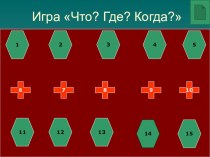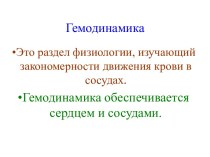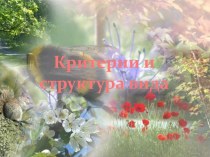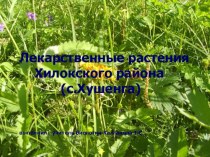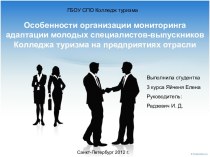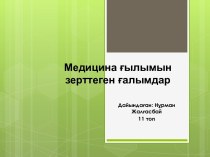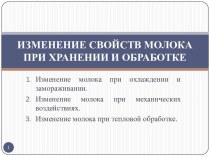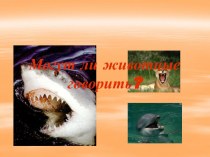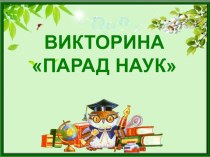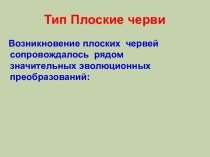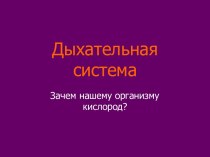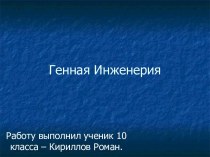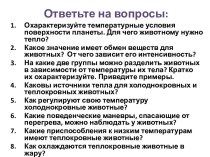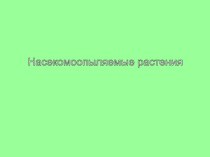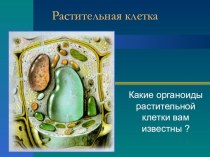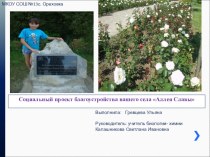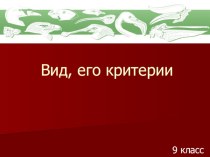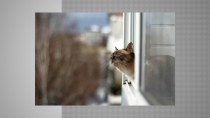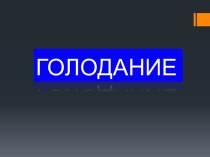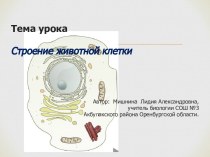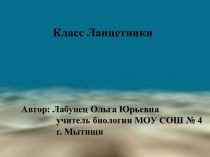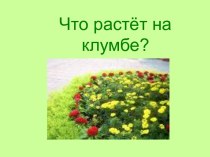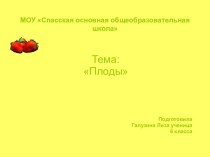- Главная
- Разное
- Бизнес и предпринимательство
- Образование
- Развлечения
- Государство
- Спорт
- Графика
- Культурология
- Еда и кулинария
- Лингвистика
- Религиоведение
- Черчение
- Физкультура
- ИЗО
- Психология
- Социология
- Английский язык
- Астрономия
- Алгебра
- Биология
- География
- Геометрия
- Детские презентации
- Информатика
- История
- Литература
- Маркетинг
- Математика
- Медицина
- Менеджмент
- Музыка
- МХК
- Немецкий язык
- ОБЖ
- Обществознание
- Окружающий мир
- Педагогика
- Русский язык
- Технология
- Физика
- Философия
- Химия
- Шаблоны, картинки для презентаций
- Экология
- Экономика
- Юриспруденция
Что такое findslide.org?
FindSlide.org - это сайт презентаций, докладов, шаблонов в формате PowerPoint.
Обратная связь
Email: Нажмите что бы посмотреть
Презентация на тему Plant cellular breeding
Содержание
- 2. APPLICATION OF CELLULAR MANIPULATIONSIn-vitro selection one of
- 3. BREEDING METHODS1 Direct (positive) selection, in which
- 4. The most common is
- 5. Scheme of direct selection of mutants is
- 7. Obtained by the method of cell selection:
- 8. Physical AgentsChemical MutagensColchicine Transposan mediated MutagenesisSite
- 9. Physical Agents
- 11. Gamma Irradiation Chambers
- 12. Chemical Mutagens1. Base analogs bromouracil (BU)
- 13. Intercalating Agents
- 15. Site Directed Mutagenesis
- 18. Oligonucleotide-based mutagenesis is the most commonly used method to introduce mutations in coding sequence.
- 19. Enhanced Genome
- 20. sometimes called site-specific mutagenesis, is a process
- 21. Somatic Embryos: This system, based
- 22. (a) Originate from
- 23. Mutagen treatment of in vitro
- 25. First In-vitro selection for disease resistance conducted
- 27. In vitro selection process to obtain disease resistance plants
- 28. General Scheme of in vitro screening for disease resistance and Selection
- 30. In-vitro selection for Fungal Diseases resistance
- 31. Radio sensitivity test for In vitro buds irradiated with various dose of gamma raysRadio sensitivity Test
- 33. Radiosensitivity Curve or Dose Curve TestвыживаниеоблучениеГрей (грэй[1])
- 37. In vitro selection of variants originating form
- 38. Screening for Banana sigotaka Leaf spot
- 39. Screening for Alternaria Blotch resistanceукорененные ростки
- 40. Plant Breeding Scheme by induced mutations and somaclonal variation
- 41. A list of disease resistant plants of various species obtained by in-vitro selection
- 42. Скачать презентацию
- 43. Похожие презентации
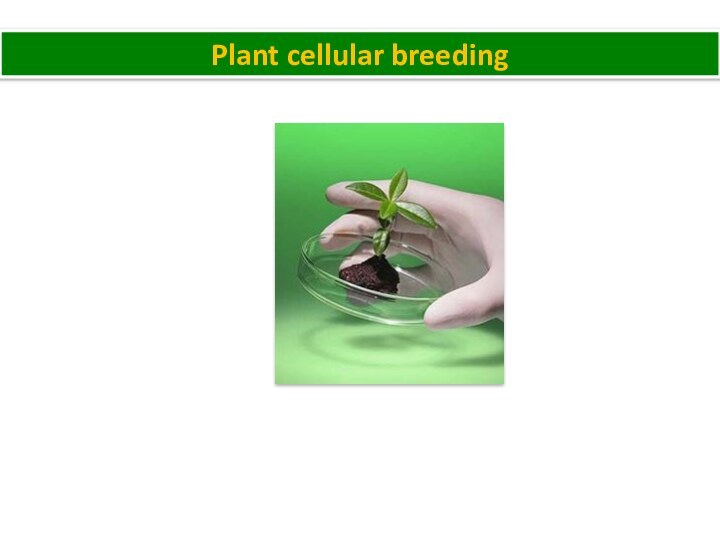

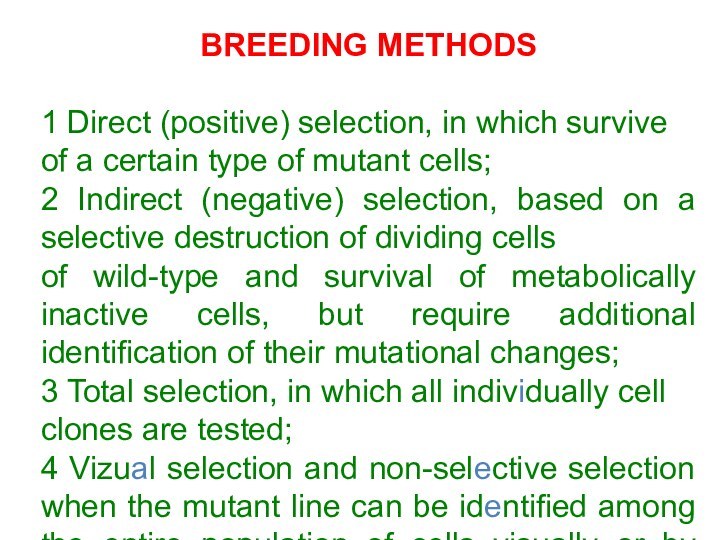
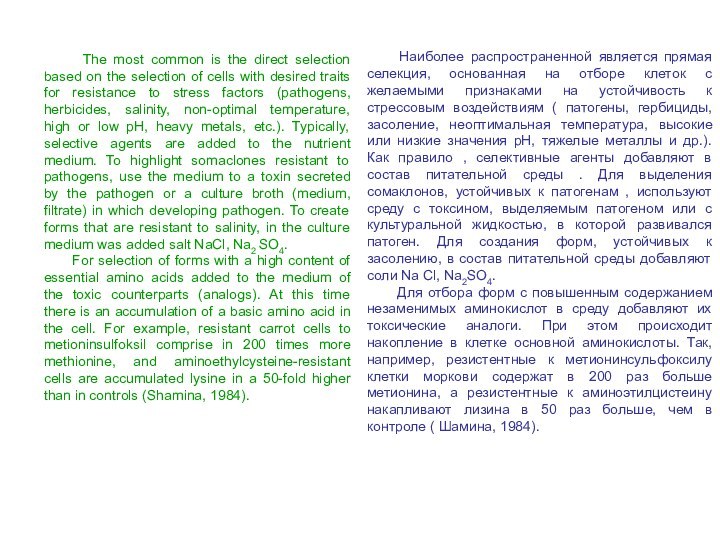




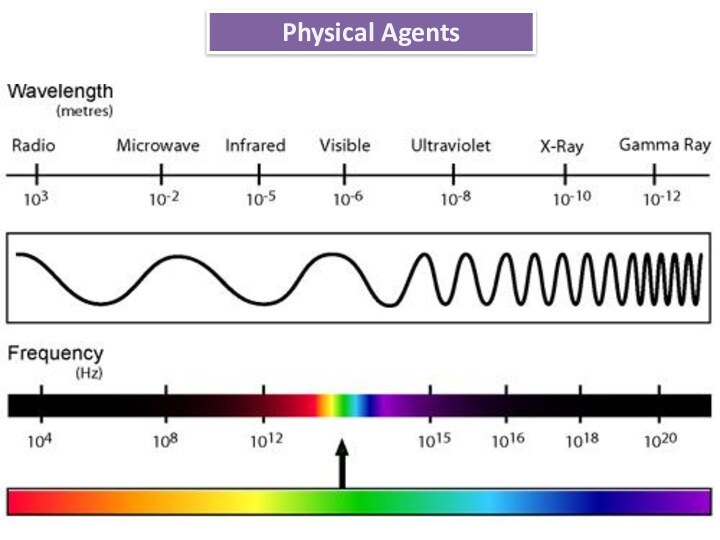



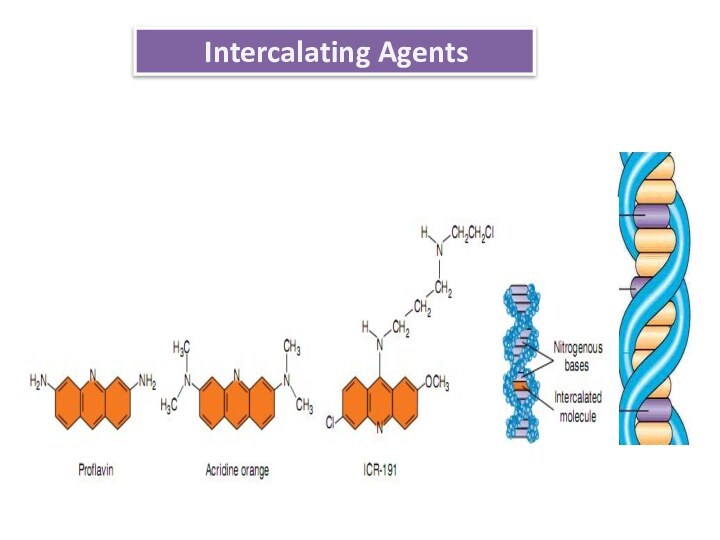

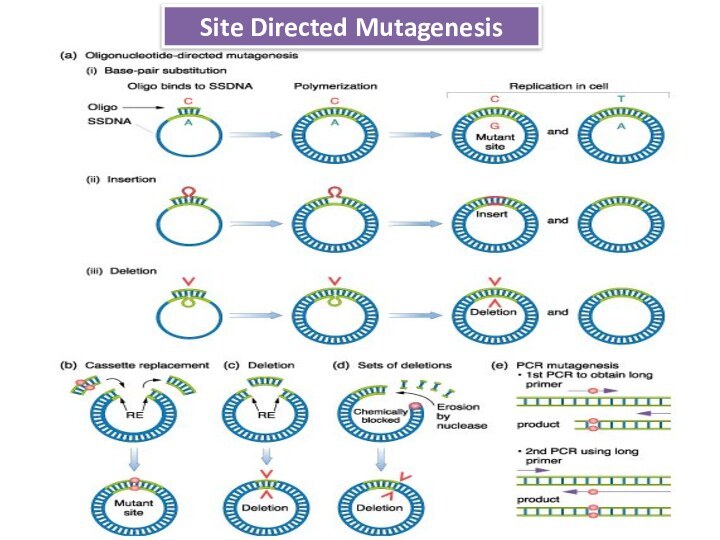
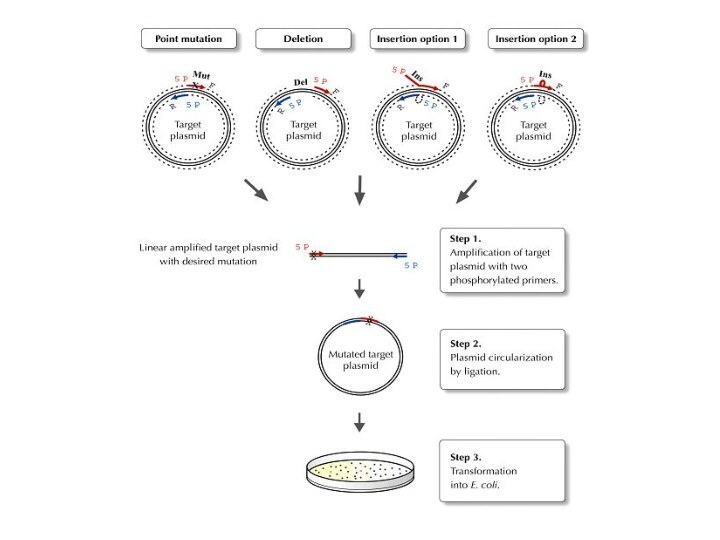

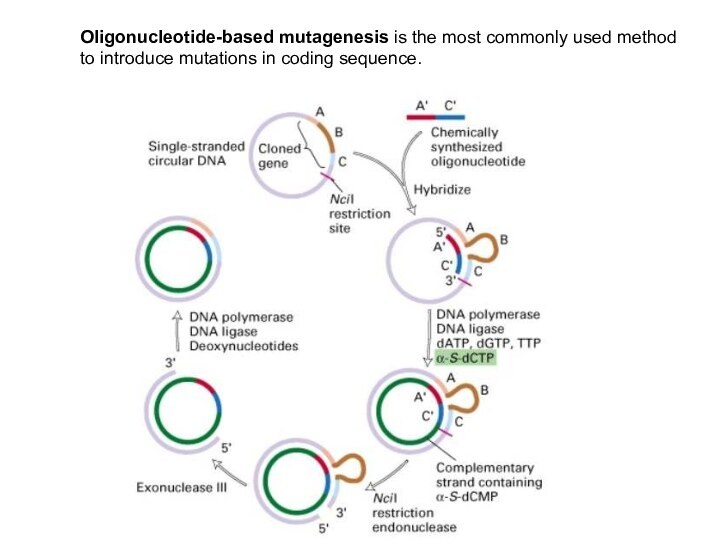

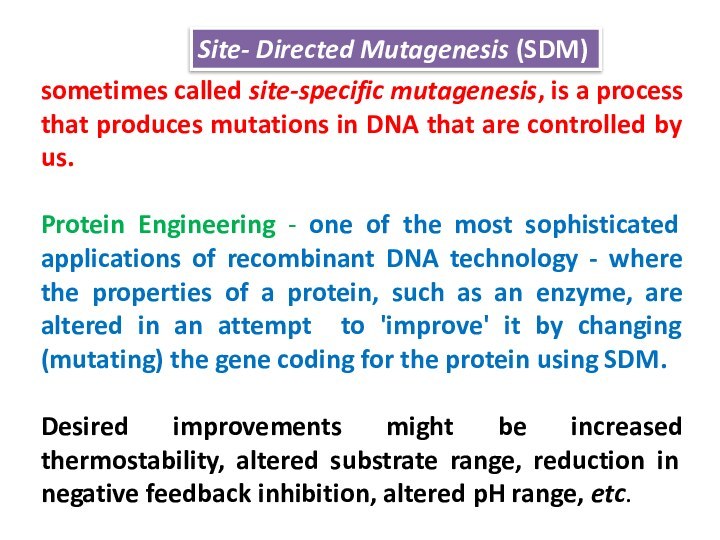




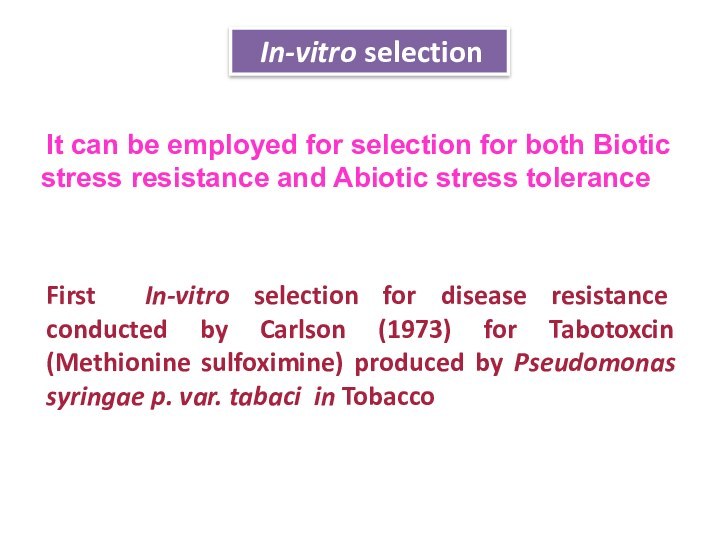
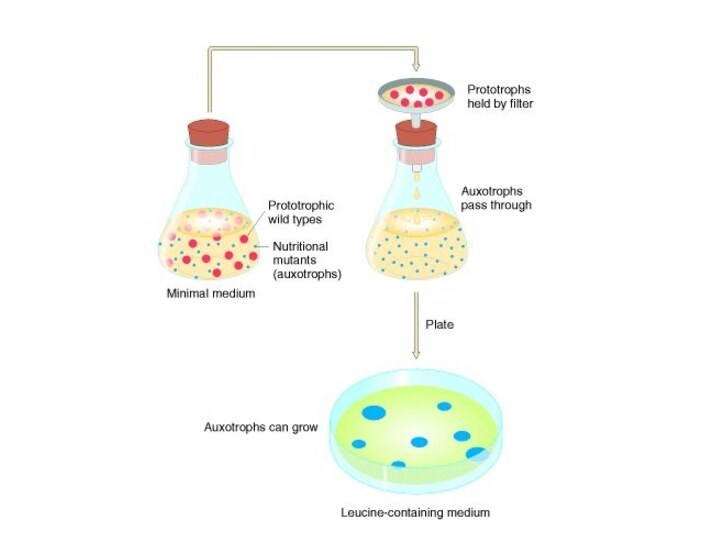


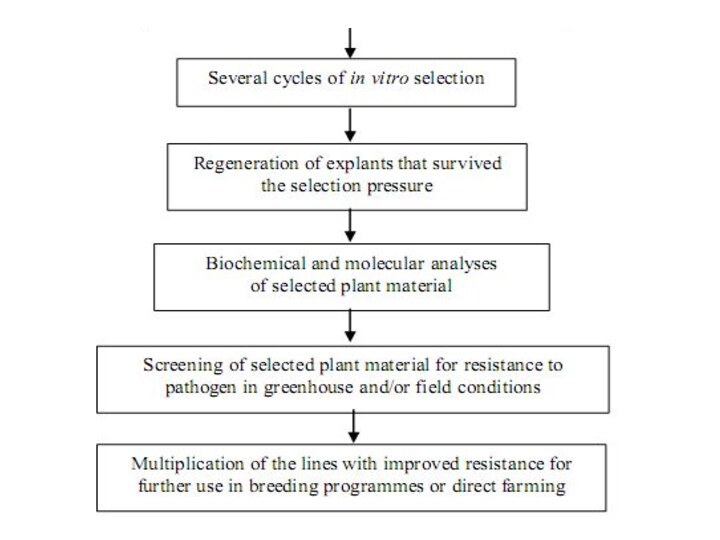
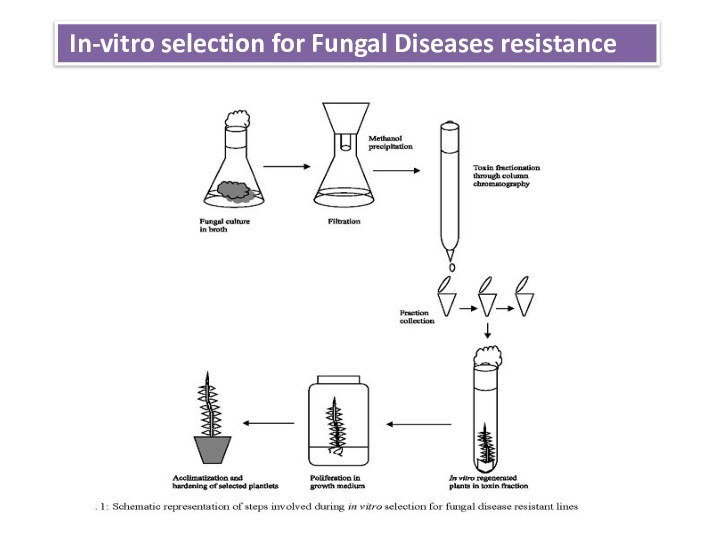


![Plant cellular breeding Radiosensitivity Curve or Dose Curve TestвыживаниеоблучениеГрей (грэй[1]) (русское обозначение: Гр, международное: Gy) — единица поглощённой дозы) —](/img/tmb/15/1429383/1f5120004258ab142d3b07669079e30b-720x.jpg)
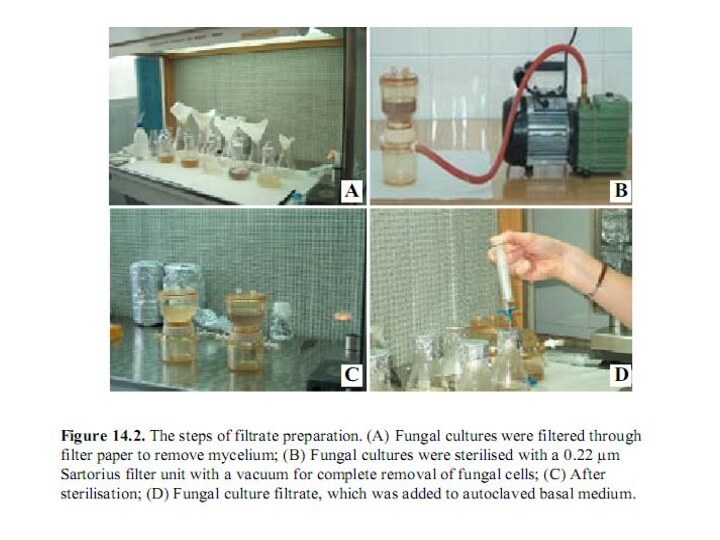
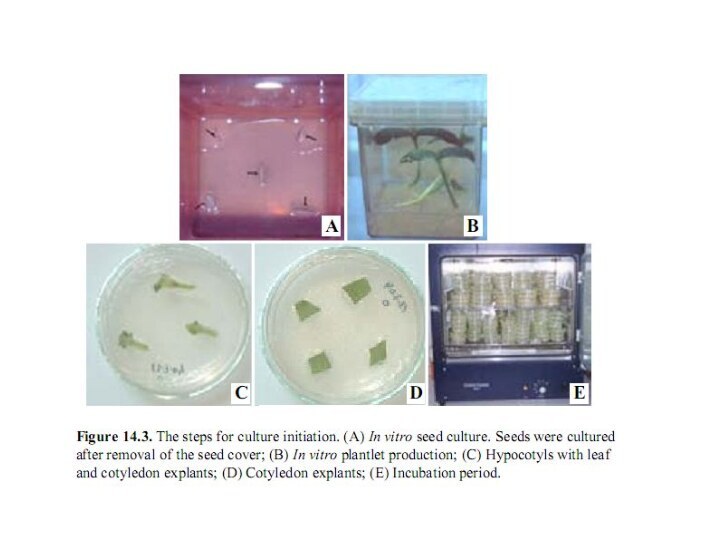

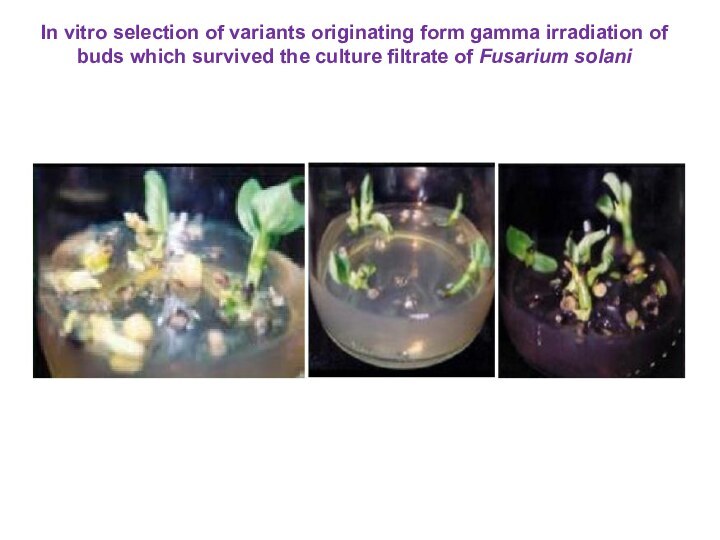



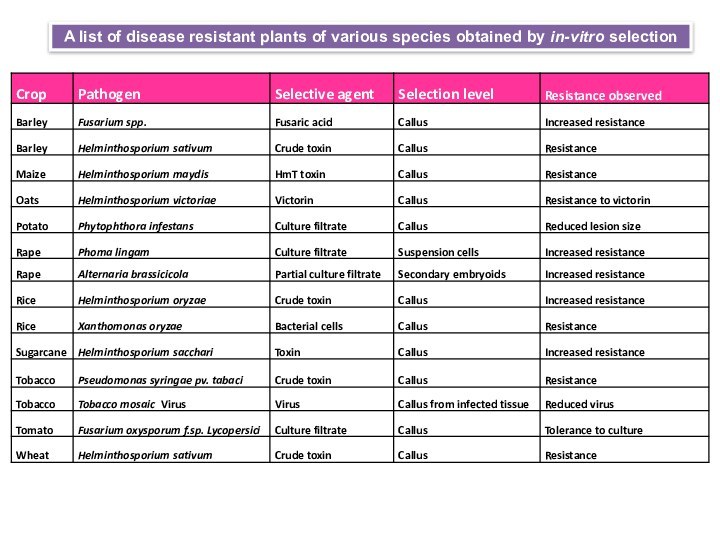
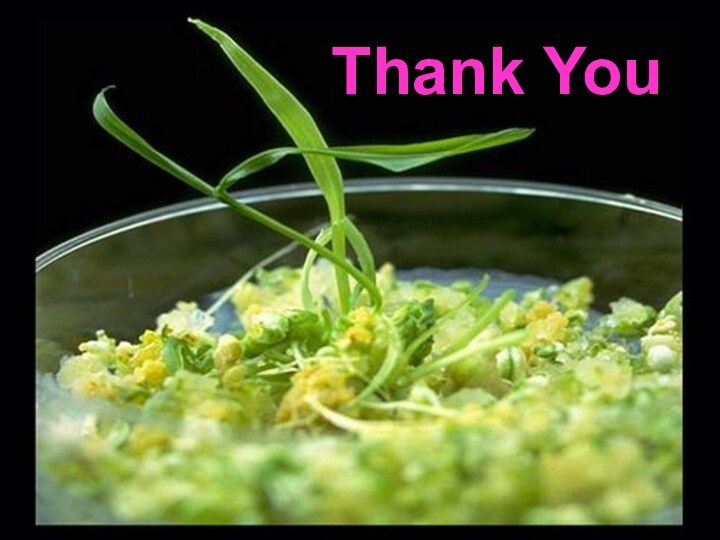
Слайд 3
BREEDING METHODS
1 Direct (positive) selection, in which survive
of a certain type of mutant cells;
2 Indirect (negative)
selection, based on a selective destruction of dividing cells of wild-type and survival of metabolically inactive cells, but require additional identification of their mutational changes;
3 Total selection, in which all individually cell clones are tested;
4 Vizual selection and non-selective selection when the mutant line can be identified among the entire population of cells visually or by using biochemical markers.
Слайд 4 The most common is the
direct selection based on the selection of cells with
desired traits for resistance to stress factors (pathogens, herbicides, salinity, non-optimal temperature, high or low pH, heavy metals, etc.). Typically, selective agents are added to the nutrient medium. To highlight somaclones resistant to pathogens, use the medium to a toxin secreted by the pathogen or a culture broth (medium, filtrate) in which developing pathogen. To create forms that are resistant to salinity, in the culture medium was added salt NaCl, Na2 SO4.For selection of forms with a high content of essential amino acids added to the medium of the toxic counterparts (analogs). At this time there is an accumulation of a basic amino acid in the cell. For example, resistant carrot cells to metioninsulfoksil comprise in 200 times more methionine, and aminoethylcysteine-resistant cells are accumulated lysine in a 50-fold higher than in controls (Shaminа, 1984).
Наиболее распространенной является прямая селекция, основанная на отборе клеток с желаемыми признаками на устойчивость к стрессовым воздействиям ( патогены, гербициды, засоление, неоптимальная температура, высокие или низкие значения рН, тяжелые металлы и др.). Как правило , селективные агенты добавляют в состав питательной среды . Для выделения сомаклонов, устойчивых к патогенам , используют среду с токсином, выделяемым патогеном или с культуральной жидкостью, в которой развивался патоген. Для создания форм, устойчивых к засолению, в состав питательной среды добавляют соли Na Cl, Na2SO4.
Для отбора форм с повышенным содержанием незаменимых аминокислот в среду добавляют их токсические аналоги. При этом происходит накопление в клетке основной аминокислоты. Так, например, резистентные к метионинсульфоксилу клетки моркови содержат в 200 раз больше метионина, а резистентные к аминоэтилцистеину накапливают лизина в 50 раз больше, чем в контроле ( Шамина, 1984).
Слайд 5 Scheme of direct selection of mutants is as
follows? (Sidorov, 1990):
1. Allocation of callus protoplasts or
suspension culture; 2. Occurrence of spontaneous somaclonal variability in cell culture, or inducing chemical or physical mutagens,
3. Culturing cells in non-selective conditions;
4. Culturing cells on selective media (selection of cell variants);
5. Culturing of the colonies of cells on the regeneration medium;
6. Regeneration of plants and their propagation (tests for stability, biochemical analyzes);
7.Vysadka plants in soil (testing to resistance of seeds, the study of the genetic nature of resistance).
Схему прямой селекции мутантов можно представить следующим образом ( Сидоров, 1990):
1.Выделение каллуса, протопластов или суспензионной культуры;
2. Возникновение спонтанной сомаклональной изменчивости в культуре клеток, или ее индуцирование химическими или физическими мутагенами;
3. Культивирование клеток в неселективных условиях;
4. Культивирование клеток на селективных средах (отбор клеточных вариантов);
5. Культивирование колоний клеток на регенерационных средах;
6. Регенерация растений и их размножение (проведение тестов на устойчивость, биохимические анализы);
7.Высадка растений в почву ( тестирование на устойчивость семян, изучение генетической природы устойчивости).
Слайд 7 Obtained by the method of cell selection: maize
line resistant to helminthosporiosis; line potatoes: resistant to late
blight; tobacco plants resistant to tobacco mosaic virus. In cell culture derived mutants with increased synthesis of essential amino acids. Thus, the selected carrot cells and tobacco, are synthesized in 20-30 times more free tryptophan in comparison to the original parent cultures. A number of cell lines of potatoes, carrots, rice, capable supersynthesis lysine, methionine, proline, phenylalanine, glycine was produced by this method.Методом клеточной селекции получены: линии кукурузы, устойчивые к гельминтоспориозу; линии картофеля, резистентные к фитофторе; растения табака, устойчивые к вирусу табачной мозаики. В культуре клеток получены мутанты с повышенным синтезом незаменимых аминокислот. Так, отобраны клеток моркови и табака, синтезирующие в 20-30 раз больше свободного триптофана по сравнению с исходными родительскими культурами. Этим способом получен целый ряд клеточных линий картофеля, моркови, риса, способных к сверхсинтезу лизина, метионина, пролина, фенилаланина, глицина
Слайд 8
Physical Agents
Chemical Mutagens
Colchicine
Transposan mediated Mutagenesis
Site Directed
Mutagenesis
Somaclonal variation
Type of Mutation Induction
In-Vitro mutant selection for
biotic stresses in Plants
Слайд 12
Chemical Mutagens
1. Base analogs
bromouracil (BU) aminopurine
(AP)
2. Chemicals which alter structure and pairing properties of
basesAlkylating agents [ethyl methanesulphonate (EMS); diethyl sulphate (dES); ethyleneimine (EI); ethyl nitroso urethane (ENU), ethyl nitroso urea (ENH), methyl nitroso urea (MNH)
3. Intercalating agents - molecules capable to embed ( intercalate ) between two comple-mentary base pairs in double-stranded DNA or RNA. Acridine orange, Proflavin, Ethidium Bromide
Слайд 18 Oligonucleotide-based mutagenesis is the most commonly used method
to introduce mutations in coding sequence.
Слайд 20 sometimes called site-specific mutagenesis, is a process that
produces mutations in DNA that are controlled by us.
Protein Engineering - one of the most sophisticated applications of recombinant DNA technology - where the properties of a protein, such as an enzyme, are altered in an attempt to 'improve' it by changing (mutating) the gene coding for the protein using SDM.
Desired improvements might be increased thermostability, altered substrate range, reduction in negative feedback inhibition, altered pH range, etc.
Site- Directed Mutagenesis (SDM)
Слайд 21
Somatic Embryos:
This system, based
on single-cell origin of regenerated plants,
allows the treatment of large populations and the rapid generation ofhomo-histonts (i.e., non-chimeric plants).
Choice of Explant for invitro mutagenesis
Choice of Plant Material
A preliminary key step toward the successful use of micropropagation for mutation breeding is the choice of the mother plant, since the starting material should provide a reliable genetic basis and high phytosanitary levels (Ahloowalia, 1998).
Virus- free mother plants are the best starting material for tissue culture initiation.
Слайд 22
(a) Originate from a
single cell, which minimises or
eliminates chimera, depending on the plant species(b) Somatic embryo cell suspension is ideal for mutation induction due to the production of direct mutant somatic embryos
(c) Behave like zygotic embryos in germination
(d) Single somatic embryo can be encapsulated
(e) Most suitable approach for plant regeneration of woody species
(f) Somatic embryos can be produced in a bioreactor, which can be automated for large scale production of somatic embryos
Advantages of somatic embryogenesis
Слайд 23
Mutagen treatment of in vitro tissues
enhances the frequency rate of spontaneous
mutations that may
result in a range of mutation spectrum (Jain and Maluszynski, 2004). Chemical mutagens
easy to handle, especially when using cell suspension.
don’t require special equipment used for radiation treatment.
Normally, chimeras are a major problem in regenerated plants by mutagen treatment of multi-cellular structures, such as shoot tips or axillary buds. Mutagen treatment of shoot tips or other organs leads to chimeras that require repeated vegetative propagation up to M1V4 level in order to dissociate the chimeras (Jain, 2000; Predrieri, 2001).
Roux et al. (2001) reduced cytochimeras by colchicine treatment in three banana
micropropagation systems shoot tip culture, using multi-apexing culture and a corm slice technique.
plant breeders prefer solid or periclinal mutants to developing mutant cultivars.
In-vitro mutagen treatment
Слайд 25
First In-vitro selection for disease resistance conducted by
Carlson (1973) for Tabotoxcin (Methionine sulfoximine) produced by Pseudomonas
syringae p. var. tabaci in Tobacco In-vitro selection
It can be employed for selection for both Biotic stress resistance and Abiotic stress tolerance
